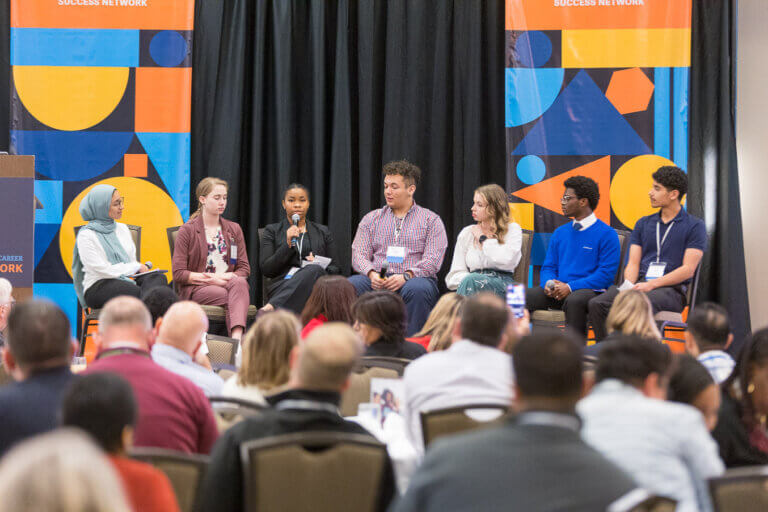When we talk about preparing students for the future workforce, we often hear from educators, employers, and policymakers. But what about the students themselves? What do they actually think about the career pathway programs designed to launch them into meaningful careers?
This year, we went straight to the source. Through the Scaling Transformative Advanced Manufacturing Pathways (STAMP) initiative, we surveyed 222 high school students from 12 schools across Illinois who are actively participating in manufacturing pathway programs. We wanted to understand their real experiences—not just whether they’re enrolled, but how they’re feeling about the support they’re receiving, the opportunities they’re accessing, and their confidence about what comes next.
Their responses reveal both encouraging successes and critical gaps that deserve our attention. Here’s what we learned when we listened to student voices about individual planning support, work-based learning experiences, career-focused coursework, and their readiness for life after graduation.
Survey Results
Participating schools included Belvidere North High School, Buffalo Grove High School, Elk Grove High School, John Hersey High School, Manual High School, Palatine High School, Pekin Community High School, Ridgewood High School, Rock Island High School, Schaumburg High School, South Elgin Area Schools, and Wheeling High School. Below is a summary of student responses organized by question.
Individual Planning
Did you receive guidance in planning your education and career path?
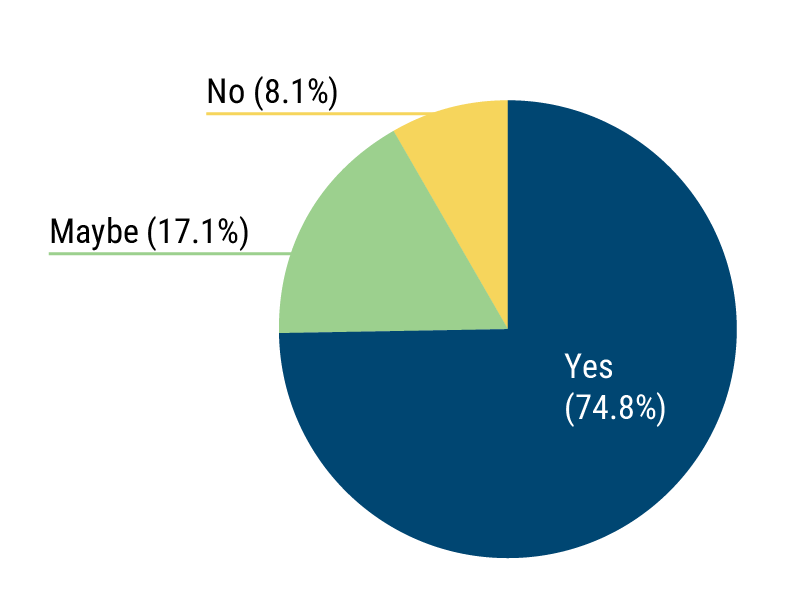
Many students report receiving guidance in planning their education and career path; however, nearly one in four students are either unsure or stated that they have not received this kind of support, highlighting a clear area for improvement in ensuring consistent and accessible planning support for all students.
Who helped you the most with your planning?
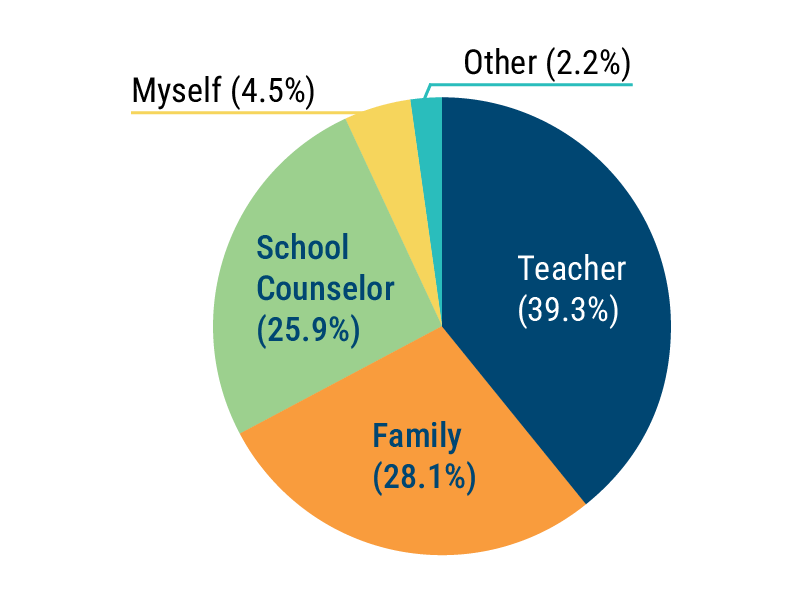
Teachers are the most frequently named source of support, followed closely by family members and school counselors. A small number of students identify themselves, mentors, or other sources. This emphasizes the strong role of school staff and families in helping students navigate their future plans.
What helped you most in planning for your future?
Students said they were most helped by:
- Supportive teachers and counselors who gave advice, answered questions, or helped them pick the right classes.
- Family encouragement, especially from parents who talked through options or helped them feel confident.
- Hands-on classes such as welding or manufacturing, which helped students discover what they’re good at and interested in.
- Opportunities to explore careers through field trips, videos, or guest speakers.
- Doing their own research and setting personal goals.
What has been the biggest challenge in planning for your future?
Students told us it’s hard when:
- They don’t know what they want to do, or have too many options to choose from.
- They don’t have enough information or support about careers, programs, or next steps.
- They struggle with motivation, procrastination, or self-doubt.
- They face scheduling problems or don’t have access to the right classes.
What additional support would have been helpful?
- More CTE classes and hands-on learning to explore interests and build real-world skills.
- Earlier and clearer information about careers, programs, and what classes or steps to take.
- Stronger guidance from counselors and teachers to help with planning and decision-making.
- Opportunities to visit worksites or meet professionals to see what different paths are really like.
- Encouragement and support from adults—at school or at home—to stay confident and motivated.
Work-Based Learning
Have you participated in any work-based learning (e.g., internships, job shadows, apprenticeships)? How valuable was this experience for your career goals?
Just under half of the students (47.3%) reported participating in a work-based learning experience. Of these respondents, the majority (>80%) found work-based learning to be somewhat or very valuable for their career goals.
However, over 40% said they hadn’t participated, and some students were unsure, suggesting opportunities may not be widely known or accessible. Expanding awareness and availability of work-based learning could help more students gain valuable real-world exposure.
What helps you most in accessing work-based learning opportunities?
- A teacher or mentor tells them about it and helped them apply.
- They have family or friends in the field< who helped them connect with jobs or internships.
- They get to practice skills in class, like welding or using machines.
- They are exposed to the real work environment, either in-person or through internships.
What is the biggest challenge in accessing work-based learning?
- Finding enough time between school, work, and personal responsibilities.
- Not knowing what was available< or how to sign up.
- Being under 18 made it harder to qualify for certain jobs or programs.
- Opportunities that didn’t match their interests, making them less motivated to apply.
What additional support would be helpful?
- More hands-on learning opportunities, such as using tools, working on real projects, and getting on-the-job experience.
- Field trips and workplace visits to see different careers and industries up close.
- Stronger communication and guidance< from schools, teachers, or companies about internships and career options.
- More CTE classes to explore different paths and build specific job skills.
- Mentorship or support from experienced adults—someone to explain things, answer questions, and share what it’s really like in the field.
Career-Focused & Early College Courses
Have you taken any manufacturing career-focused or early college courses (dual credit, Career and Technical Education (CTE), etc.)? How valuable did you find these courses for your long-term career planning?
Most (71.7%) students reported taking manufacturing-related or early college courses such as CTE or dual credit. A smaller group (14.6%) was unsure, and a minority (13.2%) had not taken these types of courses. Most participants (> 90%) found these classes to be very or somewhat valuable for their long-term career planning.
Readiness for the Future
How confident do you feel about your next steps after high school?
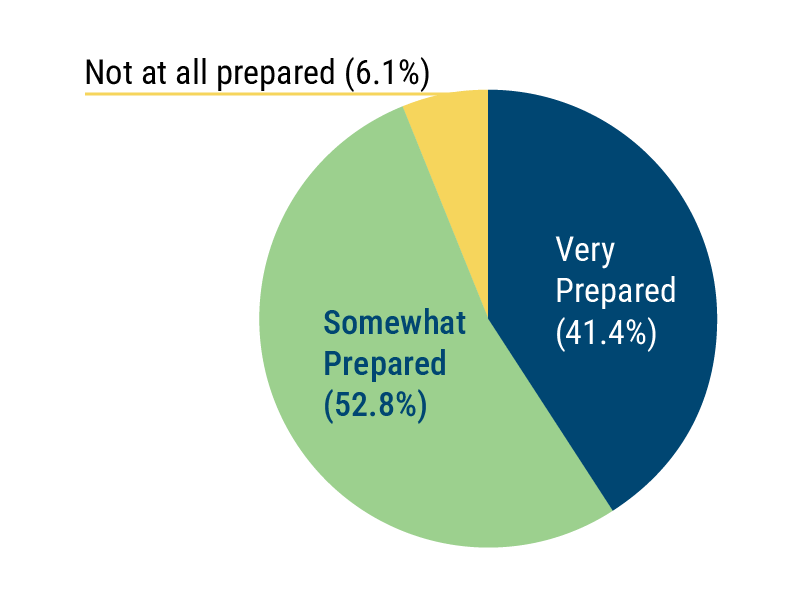
Most students (~94%) feel at least somewhat prepared for life after high school, with 41.1% saying they feel very prepared. A small group (6.1%) do not feel at all prepared, pointing to a need for continued guidance and reassurance, especially for students still unsure about their next steps.
Do you feel you have the resources and support needed for your future plans?
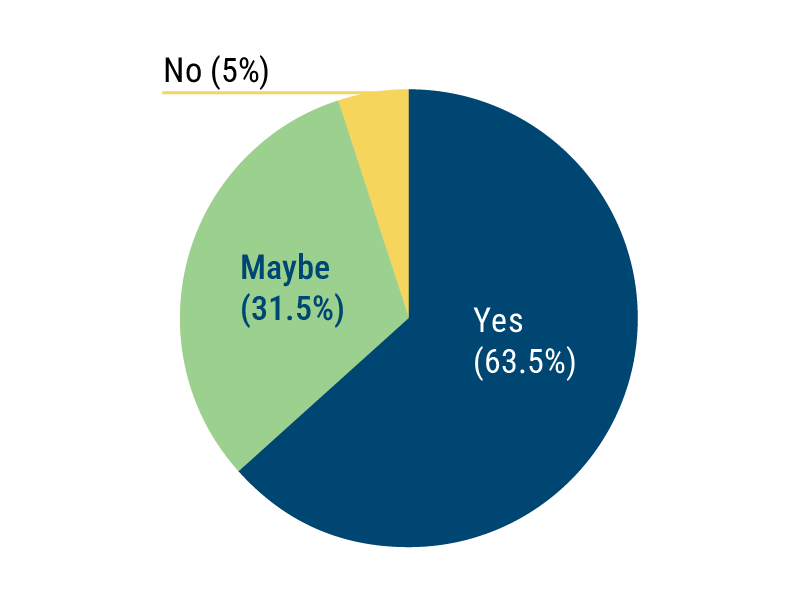
Most students (63.5%) believe they have the necessary resources and support for their future plans. However, nearly one-third (31.5%) responded with “maybe,” suggesting uncertainty or incomplete support. A smaller portion (5.0%) feel they do not have the support they need, highlighting an opportunity for schools and programs to address gaps in guidance, resources, and encouragement.
What helped you most in reaching your goals?
- Teachers, mentors, and family who give them encouragement, advice, and support.
- Hands-on experience and CTE classes to help build skills and confidence.
- Personal effort and mindset—many said they just work hard and stay focused.
What’s been your biggest challenge in reaching your goals?
- Staying motivated or focused when things got difficult.
- Managing their time and balancing school, work, and life.
- Not knowing where to start, especially when it came to post-high school planning.
- Financial barriers, like paying for college or affording the tools they need.
What additional support would have been helpful?
- More CTE classes and career-specific resources to better understand and prepare for different job paths.
- Field trips and real-world exposure>—visiting workplaces, trade schools, or hearing from people in the field.
- Better guidance and communication from counselors, teachers, and schools about opportunities and next steps.
- Smaller class sizes or more teacher support, especially in hands-on classes like manufacturing or welding.
- Support at home and encouragement from adults, including parents and mentors, to stay focused and confident.
Conclusion
Students in STAMP programs are motivated and hopeful about their futures, and many shared positive experiences that demonstrate the impact of high school manufacturing and career pathway programs. A majority feel they’ve gained valuable skills, taken courses that connect to their goals, and had teachers and counselors who truly support them.
Here’s what’s working well:
- Career-focused courses, especially hands-on ones, are helping students explore interests and build confidence in their paths.
- Supportive teachers and mentors play a key role in connecting students to work-based learning and postsecondary planning.
- Many students feel “somewhat” or “very” prepared for life after high school, and most say they have the resources they need to take their next steps.
At the same time, students identified clear areas for improvement:
- Not all students are equally aware of opportunities—some didn’t hear about programs or internships until later in high school.
- Students want more exposure to real-world careers through field trips, internships, and access to professionals in the field.
- More consistent and proactive guidance, especially during the early years of high school, would help students feel more confident and informed in their planning.
- Access issues, including transportation, limited course options, and scheduling conflicts, can be barriers for some.
By continuing to expand access to career-connected learning, providing early and ongoing guidance, and amplifying the voices of students, schools can build on what’s already working to ensure every student feels prepared, supported, and excited about life after high school.
Photo by Allison Shelley/Complete College Photo Library

